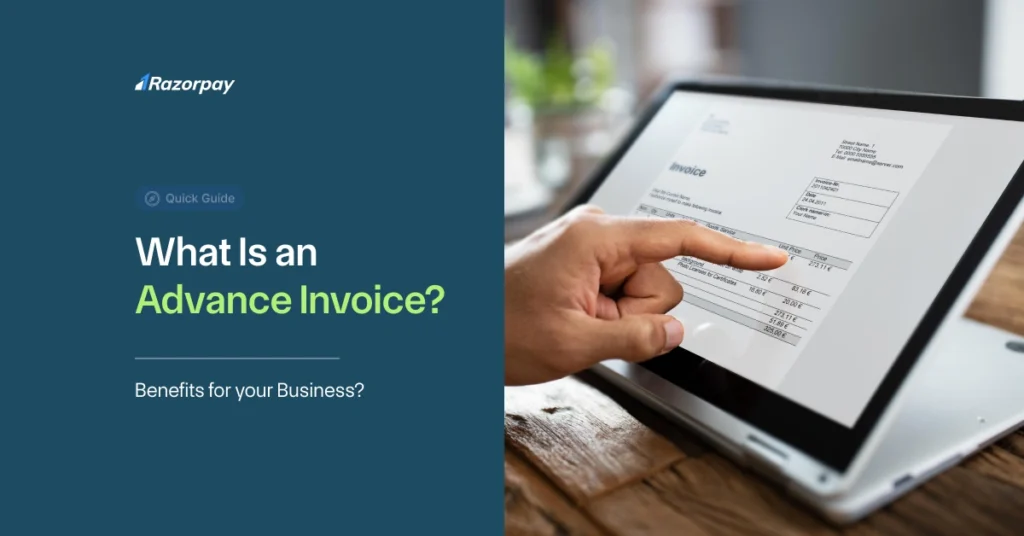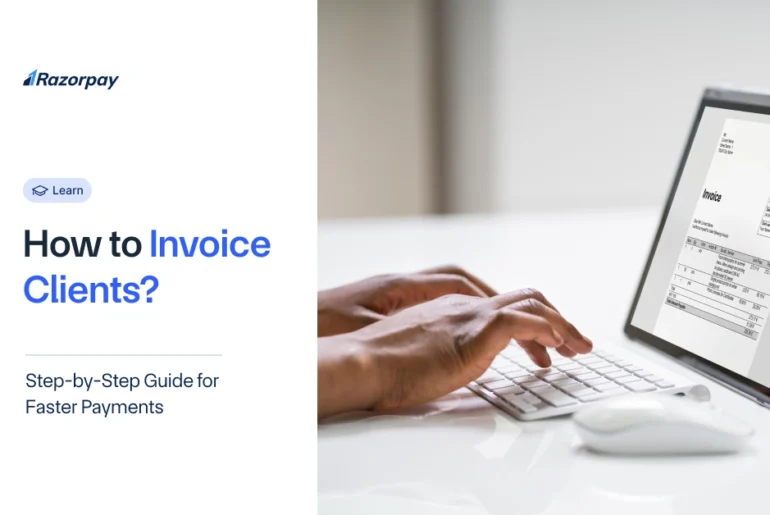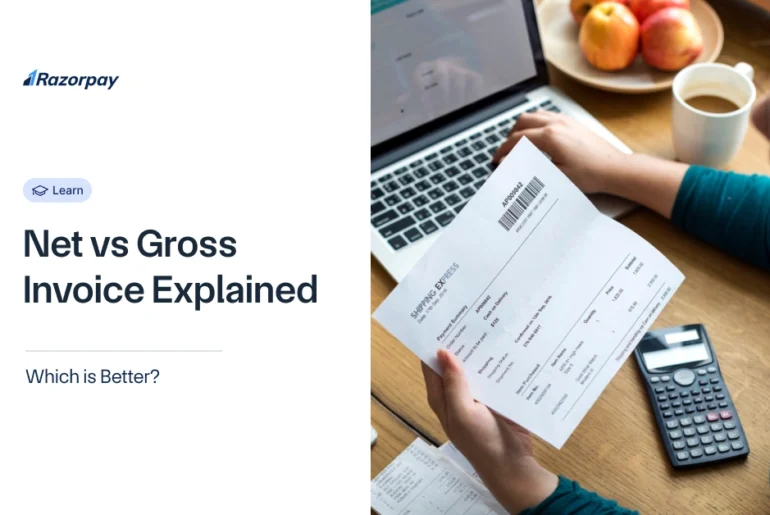Let’s imagine that you’ve just landed a big project, but before you even begin, there are upfront costs to manage — materials, resources, time, maybe even a deposit for a third-party vendor. Wouldn’t it be great to have some of that money in hand before you start? That’s exactly where advance invoicing steps in.
Whether you’re a freelancer, a consultant, or a growing business taking on high-value orders, advance invoices offer a simple yet powerful way to keep your cash flow steady and your operations running smoothly. In this blog, we’ll explore what an advance invoice really means, how it works, and why it’s becoming a smart go-to for businesses looking to reduce financial risk and strengthen client relationships — all while getting paid on time.
Table of Contents
What is an Advance Billing?
An advance invoice is a bill that businesses issue before delivering goods or services — essentially a way of requesting payment upfront. This differs from a standard invoice, which is typically raised after the service has been rendered or the product has been delivered.
Think of it as a handshake agreement, backed by money. It signals commitment from both parties — the business gets partial or full payment in advance, and the customer secures their order or booking.
Why do Businesses use Advance Invoices?
Advance invoicing serves multiple purposes, especially for service-led or project-based businesses:
- To secure upfront payments and confirm customer intent: Helps businesses ensure that the customer is serious about the order or project.
- To reduce financial risk: Protects against last-minute cancellations, no-shows, or payment defaults.
- To improve cash flow and cover operational costs: Keeps the cash flowing so the business can pay for supplies, resources, or team members even before work begins.
Examples
- A wedding photographer might issue a 50% advance invoice at the time of booking. This ensures the date is locked, covers pre-event planning costs, and protects the photographer in case the client cancels close to the event.
- A custom furniture maker who builds pieces to order may request a 40% advance payment before starting work. Since materials like wood, upholstery, and fittings are purchased specifically for each client, the advance helps them invest in raw materials with confidence and avoid losses from non-serious buyers.
How to Manage Advance Invoices?
Managing advance invoices effectively requires a structured approach. Here’s how:
1. Create Clear Invoicing Terms
- Clearly mention “Advance Invoice” on the document
- Include payment terms, due dates, and refund policies
2. Track Payments Systematically
- Maintain a detailed record of advance invoices issued and payments received
- Reconcile payments with services/products delivered
3. Use Invoicing Software
Razorpay’s Automated Invoice Processing can help:
- Auto-generate and send advance invoices
- Set up payment reminders
- Monitor invoice status in real-time
4. Ensure Compliance
- Record advance invoices properly for tax purposes
- Keep invoices archived for audits and financial tracking
Best Practices:
- Always have signed contracts or agreements before issuing advance invoices
- Clearly define scope, timelines, and milestones
How is Advance Invoicing Different From Advance Billing?
These two terms are often used interchangeably but are distinct in their usage:
|
Criteria |
Advance Invoicing |
Advance Billing |
| Timing | Before service/product delivery | Before service over a long-term period |
| Usage | One-time or project-based | Subscription-based models |
| Examples | Contractor charging 30% upfront | SaaS company billing annually |
-
Advance Invoicing
This is more commonly used in industries like freelancing, consulting, event management, construction, or any project-based business. The goal is to confirm the client’s commitment and cover initial costs. Example: A graphic designer might send an advance invoice for 50% of the total cost before beginning work on a client’s branding project. This helps cover time, software, or stock purchases required for the project.
-
Advance Billing
This approach is typical in subscription-based models or long-term service agreements. The business bills the client for services that will be delivered over a set period, such as a month, quarter, or year. Example: A digital marketing agency offering retainer-based services may send an advance bill at the start of each month for the upcoming 30 days of work — including social media management, SEO, and reporting.
How to Account for Advance Payments Received?
When a customer makes an advance payment, it’s not yet revenue. Here’s how to account for it:
- Record as liability:
- Advance payments are recorded as a current liability under “Unearned Revenue“
- Recognize revenue only after delivery:
- Once goods are delivered or services are rendered, move the amount from liabilities to revenue
Example:
A consultant receives ₹50,000 in advance. This is recorded as:
- Debit: Bank Account ₹50,000
- Credit: Unearned Revenue ₹50,000
After delivering the service:
- Debit: Unearned Revenue ₹50,000
- Credit: Revenue ₹50,000
How to Report Advance Payments Received?
Receiving an advance payment is great — it secures your cash flow and shows the customer is serious. But here’s the catch: the moment that advance hits your account, your tax responsibilities kick in. If you don’t report it correctly, you could end up paying penalties or facing GST mismatches down the line.
GST Implications in India:
- GST is applicable at the time of receipt of advance payment
- A tax invoice must be issued once the service is delivered
Reporting Tips:
- Maintain separate ledgers for advance receipts
- Match GST liability with the advance received
- File proper returns with advance payment details to avoid penalties
Example:
An interior design firm receives an advance of ₹1,00,000. GST must be calculated and paid on this advance, even if the work starts later.
How can Automation Streamline your Advance Invoicing Process?
Let’s face it — manual invoicing can be a headache. From missed follow-ups to mismatched entries, there’s plenty that can go wrong. That’s where automation steps in — not just as a time-saver, but as a game-changer for your billing workflow.
Whether you’re managing multiple clients or handling repeat projects, automating your advance invoicing process can help you stay on top of payments without breaking a sweat. Here’s how:
-
Auto-generate invoices
Set up your invoice template once — and let the system create and send advance invoices automatically for every new order or project.
-
Send payment reminders
No need to manually follow up. Automated reminders keep clients informed and help you get paid on time.
-
Sync with accounting tools
Connect your invoicing system with tools like Razorpay, QuickBooks, or Zoho to update records instantly and reconcile payments in real time.
-
Track payments easily
Know exactly who has paid and who hasn’t — all in one dashboard. No more guesswork or messy spreadsheets.
Improving Cash Flow with Advance Invoicing
Advance invoicing is a powerful tool for working capital management.
How it helps:
- Provides immediate funds for operations
- Reduces dependency on credit
- Helps pay suppliers and employees on time
Example:
An e-commerce brand asks for full payment before dispatching high-value electronics. This ensures they aren’t exposed to the risk of COD (cash-on-delivery) defaults.
Advance invoices give businesses the liquidity they need to scale confidently.
Advantages of Advance Invoicing
- Improved cash flow and working capital
- Minimizes payment default risks
- Encourages customer commitment to the transaction
- Enables better resource planning
Example:
A freelance designer requests 40% upfront, which helps block their time and cover tools/software expenses upfront.
Disadvantages of Advance Invoicing
While useful, advance invoicing also has a few cons:
- Customer resistance to pay before delivery
- Higher chances of refund requests if expectations are not met
- Admin overhead in managing advance tracking, GST, and delivery confirmations
Not Ideal For:
- Retail outlets
- Fast food businesses
- On-the-spot sales models
Risk Mitigation Tips:
- Offer partial advances (20-30%) instead of full payments
- Set clear refund and service delivery terms
Conclusion
Advance invoicing can significantly enhance business efficiency, cash flow, and financial planning when used wisely. It enables businesses to operate with more certainty and less financial stress.
To get the most out of advance invoicing, consider:
- Using automated invoice processing tools
- Establishing clear communication with clients
- Keeping compliant with tax and accounting rules
Explore Razorpay’s invoice solutions to simplify and automate your advance invoicing process today.
Frequently Asked Questions (FAQs)
1. What is the purpose of an advance invoice?
To secure upfront payment from customers before delivering goods or services and reduce financial risk.
2. How is an advance invoice different from a regular invoice?
A regular invoice is issued after product/service delivery; an advance invoice is issued before delivery.
3. Is advance invoicing suitable for small businesses?
Yes. It helps small businesses ensure payment security and manage cash flow effectively.
4. How can businesses handle disputes related to advance invoices?
By having clear contracts, defined deliverables, and transparent refund policies in place.
5. Is GST applicable on advance invoices in India?
Yes. GST must be paid on advance receipts even before the goods/services are delivered.



